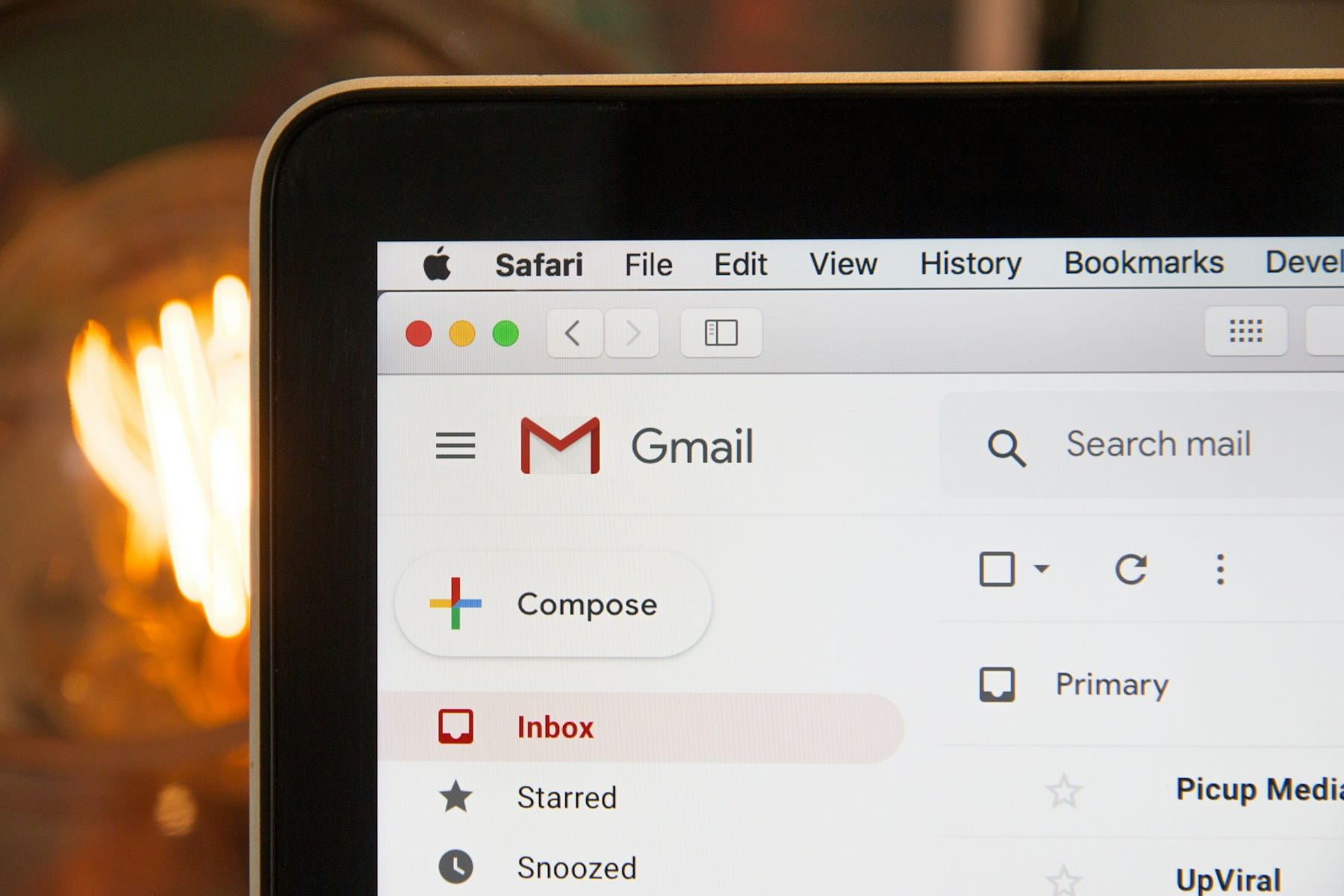13 Essential Email Deliverability Tips for Better Inbox Placement
Email deliverability determines whether your carefully crafted messages reach the inbox or disappear into spam folders—making it a critical factor for any successful email marketing strategy.
Understanding why some emails reach the inbox while others get filtered requires knowledge of how Internet Service Providers (ISPs) evaluate incoming messages. ISPs use complex algorithms that consider sender reputation, authentication, content quality, and recipient engagement to make placement decisions.
This guide presents 13 practical strategies that significantly improve your chances of reaching the inbox. From technical authentication setup to list management best practices, these tips help establish the trust and credibility that ISPs look for when evaluating your emails.
Whether you're sending transactional emails or marketing campaigns, implementing these deliverability fundamentals ensures your messages consistently reach their intended recipients.
Table of contents
- Use a subdomain for email sending
- Set up DMARC authentication
- Match URLs to your sending domain
- Consider tracking implications
- Keep emails lightweight and accessible
- Avoid lookalike domains
- Test emails thoroughly
- Maintain a clean email list
- Use responsive sender addresses
- Send consistently
- Warm up new domains properly
- Include unsubscribe links in broadcast emails
- Consider dedicated IP addresses
1. Use a subdomain for email sending
The domain you choose for sending emails significantly impacts deliverability. Rather than sending from your root domain, using a subdomain provides several strategic advantages for email delivery.
Benefits of subdomain sending
Purpose clarity: Subdomains immediately communicate the email's purpose to both recipients and ISPs. Examples include:
newsletter.company.comfor marketing emailstransactional.company.comfor account notificationsalerts.company.comfor system notifications
Reputation isolation: Separate subdomains protect your main domain reputation. If issues arise with marketing email reputation, they won't affect your transactional email delivery or website domain.
Organizational benefits: Different teams can manage different subdomains, allowing for specialized authentication setups and sending practices tailored to each email type.
Implementation considerations
When setting up subdomains for email sending:
- Choose descriptive names that reflect the email purpose
- Configure separate authentication records for each subdomain
- Monitor reputation metrics independently for each subdomain
- Maintain consistent branding across all subdomains
SelfMailKit simplifies subdomain setup by providing guidance on DNS configuration and automatic authentication setup for your chosen sending domains.
2. Set up DMARC authentication
DMARC (Domain-based Message Authentication, Reporting, and Conformance) is an email authentication protocol that tells receiving mail servers how to handle emails that fail SPF or DKIM authentication checks.
How DMARC improves deliverability
Authentication verification: DMARC builds on SPF and DKIM authentication methods to provide comprehensive sender verification, helping ISPs confirm that emails are legitimately from your domain.
Spoofing protection: By specifying how to handle failed authentication, DMARC prevents unauthorized parties from sending emails that appear to come from your domain.
Reporting capabilities: DMARC provides detailed reports about email authentication results, helping you identify and resolve deliverability issues.
Basic DMARC setup
A basic DMARC record might look like:
v=DMARC1; p=none; rua=mailto:reports@yourdomain.com;
This record tells receiving servers to:
- Accept emails that fail authentication (
p=none) - Send aggregate reports to your specified email address
- Apply DMARC policy to your domain
Start with a "none" policy to monitor email flow, then gradually move to "quarantine" or "reject" policies as you verify proper authentication setup.
For comprehensive guidance on email authentication setup, see our detailed DNS email records guide covering SPF, DKIM, and DMARC implementation.
3. Match URLs to your sending domain
URL consistency between your sending domain and email content helps establish authenticity and improves deliverability. When your email links point to domains different from your sending domain, it can trigger spam filters.
Why URL matching matters
Trust signals: ISPs view consistent domains as indicators of legitimate email communication. When your sending domain, email content, and links all use related domains, it builds credibility.
Brand consistency: Recipients recognize and trust emails when all elements use familiar, branded domains rather than random or unrelated URLs.
Authentication alignment: Consistent domains support proper DMARC alignment, which improves authentication pass rates.
Implementation strategies
Link domain consistency: Ensure links in your emails point to your main domain or related subdomains rather than third-party tracking domains or unrelated URLs.
Image hosting: Host email images on your own domain or CDN using your branded domain rather than third-party image hosting services.
Tracking domains: If using tracking, configure custom tracking domains that match your sending domain structure.
Landing page alignment: Direct email clicks to landing pages hosted on your main domain to maintain consistency throughout the recipient experience.
4. Consider tracking implications
Email tracking can impact deliverability, though the effect varies depending on implementation and recipient preferences. Understanding tracking implications helps you make informed decisions about measurement versus deliverability optimization.
Potential tracking concerns
Link modification: Email tracking typically requires modifying original URLs to redirect through tracking servers, which some spam filters flag as suspicious.
Image loading: Open tracking relies on invisible image pixels that some email clients and privacy-focused recipients automatically block.
Privacy considerations: Increasing privacy awareness means some recipients prefer emails without tracking elements, and blocking tracking can affect engagement metrics. Consider reviewing our email privacy policy guidance for transparency best practices.
Balanced approach to tracking
Essential tracking only: Focus on tracking metrics that directly support your email program goals rather than collecting all possible data points.
Transparent practices: Consider informing subscribers about tracking practices in your privacy policy and providing options to opt out of tracking.
Alternative measurement: Use engagement metrics like reply rates, website traffic, and conversion tracking that don't require email-level tracking modifications.
Progressive implementation: Test tracking impact on deliverability with small segments before applying to entire email programs.
For more insights on measuring email performance without compromising deliverability, explore our email delivery best practices guide.
5. Keep emails lightweight and accessible
Email size and accessibility directly impact deliverability and user experience. Large, complex emails are more likely to be filtered, while accessible design ensures broad compatibility across email clients and devices.
Size optimization strategies
HTML efficiency: Write clean, minimal HTML code that renders consistently across email clients without unnecessary complexity or inline styles.
Image optimization: Compress images to reduce file size while maintaining visual quality. Consider using modern image formats with appropriate fallbacks.
Content balance: Maintain proper text-to-image ratios to avoid triggering spam filters that flag image-heavy emails as potentially promotional. Understanding how email spam filters work helps you avoid common content pitfalls.
Attachment alternatives: Instead of attachments, link to downloadable resources hosted on your website to reduce email size and improve deliverability.
Accessibility best practices
Alt text implementation: Provide descriptive alt text for all images to ensure content accessibility when images don't load or for visually impaired recipients.
Semantic HTML structure: Use proper heading tags, lists, and semantic elements to support screen readers and assistive technologies.
Color contrast: Ensure sufficient color contrast between text and backgrounds for readability across different visual capabilities.
Plain text versions: Provide plain text alternatives for HTML emails to ensure compatibility with all email clients and user preferences.
6. Avoid lookalike domains
Using domains that intentionally resemble well-known brands or services can severely damage deliverability and may violate anti-fraud regulations. ISPs actively filter emails from suspicious domains.
Why lookalike domains hurt deliverability
Fraud detection: ISPs use sophisticated algorithms to detect domains that might be used for phishing or impersonation attempts.
Brand protection: Major email providers protect well-known brands by filtering emails from domains that too closely resemble legitimate companies.
Reputation penalties: Lookalike domains often start with poor reputation and face significant challenges building trust with ISPs.
Building authentic domain reputation
Unique branding: Develop distinctive domain names that clearly represent your business without copying existing brands.
Consistent usage: Use the same domain consistently across all communications to build recognition and trust.
Legal compliance: Ensure your domain choices don't infringe on existing trademarks or create confusion with established brands.
Long-term thinking: Choose domains that will serve your business well as it grows, avoiding the need to change sending domains frequently.
7. Test emails thoroughly
Comprehensive email testing identifies deliverability issues before they impact your entire campaign. Testing across different clients, devices, and spam filters helps ensure consistent delivery and rendering.
Essential testing areas
Spam filter testing: Use tools to check how major spam filters evaluate your emails, identifying potential content or structure issues.
Email client rendering: Test email appearance across major clients including Gmail, Outlook, Apple Mail, and mobile applications.
Authentication verification: Verify that SPF, DKIM, and DMARC authentication work correctly for your sending setup.
Link functionality: Ensure all links work correctly and point to the intended destinations without redirects through suspicious domains.
Testing methodologies
Seed list testing: Send test emails to accounts across different ISPs to monitor delivery rates and inbox placement.
A/B testing: Test different subject lines, content, and sending approaches to identify what works best for your audience. Learn more about crafting effective subject lines in our best email subject lines guide.
Gradual rollouts: Start with small segments when testing new approaches, expanding only after confirming good deliverability.
Regular monitoring: Establish ongoing testing schedules to catch issues early and maintain consistent delivery performance.
8. Maintain a clean email list
List hygiene directly impacts deliverability by reducing bounces, spam complaints, and inactive recipient ratios that damage sender reputation. Regular list maintenance ensures you're sending to engaged, valid addresses.
Core list hygiene practices
Bounce management: Remove hard bounces immediately and handle soft bounces appropriately. Continuing to send to invalid addresses damages reputation quickly.
Engagement segmentation: Identify subscribers who haven't opened or clicked emails in 90+ days. Create re-engagement campaigns before removing unresponsive subscribers.
Suppression lists: Maintain comprehensive suppression lists for unsubscribes, complaints, and invalid addresses to prevent accidentally sending to these contacts again.
Regular validation: Use email validation services to verify address accuracy, especially for older list segments or imported contacts.
Advanced list management
Preference centers: Allow subscribers to control email frequency and content types, reducing unsubscribes and improving engagement.
Sunset policies: Implement policies for removing inactive subscribers after defined periods, maintaining list quality over quantity.
Source tracking: Monitor where subscribers come from to identify high-quality sources and avoid problematic acquisition methods.
Engagement scoring: Develop scoring systems that consider multiple engagement factors beyond opens and clicks. Learn systematic optimization approaches in our email A/B testing guide.
Learn more about comprehensive list management in our email segmentation guide, which covers advanced segmentation and engagement strategies.
9. Use responsive sender addresses
No-reply email addresses signal to both recipients and ISPs that you don't want engagement, which can negatively impact deliverability. Using addresses that encourage replies improves sender reputation and user experience.
Problems with no-reply addresses
Engagement signals: ISPs consider recipient engagement when evaluating sender reputation. No-reply addresses discourage the positive engagement signals that improve deliverability.
User experience: Recipients who want to respond to your emails but can't may mark them as spam instead, directly harming your reputation.
Feedback loss: Customer feedback and questions sent to no-reply addresses are lost, eliminating valuable insights for improving your email program.
Better sender address strategies
Monitored addresses: Use addresses like hello@company.com or team@company.com that are actively monitored and can respond to customer inquiries.
Department-specific addresses: Use relevant department addresses like support@company.com for transactional emails or marketing@company.com for promotional content.
Personal addresses: For smaller companies, using founder or team member addresses can create personal connections that improve engagement.
Auto-response setup: If unable to respond personally, set up helpful auto-responses that direct recipients to appropriate resources or support channels.
10. Send consistently
Consistent sending patterns help establish trust with ISPs and maintain good deliverability. Irregular sending volumes or long gaps between campaigns can trigger spam filters and reduce inbox placement rates.
Why consistency matters
Reputation building: ISPs track sending patterns over time. Consistent volumes and frequencies help build the positive reputation needed for good deliverability.
Recipient expectations: Subscribers expect regular communication based on your stated sending frequency. Inconsistent sending can lead to increased unsubscribes or spam complaints.
Infrastructure trust: Email infrastructure performs better with predictable loads. Sudden volume spikes can trigger automated filters or delivery delays.
Building consistent sending practices
Editorial calendars: Plan email content and sending schedules in advance to maintain regular communication with subscribers. Our newsletter best practices guide covers content planning strategies.
Volume management: Gradually increase sending volumes rather than making sudden jumps that might trigger spam filters.
Frequency optimization: Find the optimal sending frequency for your audience through testing and engagement monitoring, then maintain that schedule consistently.
Automation setup: Use email automation to maintain consistent touchpoints with subscribers based on their actions and preferences.
For guidance on building effective automated email sequences, explore our double opt-in guide which covers setting up consistent welcome sequences.
11. Warm up new domains properly
New domains and IP addresses need gradual introduction to ISPs to build positive reputation. Sudden high-volume sending from new domains triggers spam filters and can result in poor deliverability from the start.
Why domain warm-up matters
Reputation building: ISPs track sending patterns and volumes over time. New domains without sending history are treated with suspicion until they prove trustworthiness through consistent, appropriate sending behavior.
Volume escalation: Starting with small volumes and gradually increasing allows ISPs to observe your sending patterns and recipient engagement without triggering automated filters.
Engagement establishment: Beginning with your most engaged subscribers helps establish positive engagement metrics that influence how ISPs treat future emails from your domain.
Effective warm-up strategies
Start small: Begin with 50-100 emails per day to your most engaged subscribers who are likely to open and interact with your messages.
Gradual increases: Double your daily sending volume every few days, monitoring bounce rates and engagement metrics closely.
Monitor metrics: Watch for any signs of deliverability issues during warm-up, including increased bounce rates, lower engagement, or spam folder placement.
Engagement focus: Prioritize sending to subscribers who have recently engaged with your emails rather than sending to your entire list immediately.
SelfMailKit handles domain warm-up automatically through managed processes that follow ISP best practices, eliminating the complexity of manual warm-up procedures while ensuring optimal reputation building.
12. Include unsubscribe links in broadcast emails
Unsubscribe links are both a legal requirement and a deliverability best practice for promotional emails. Proper unsubscribe implementation reduces spam complaints and demonstrates respect for recipient preferences.
Legal and deliverability requirements
Compliance necessity: Laws like CAN-SPAM (US) and GDPR (EU) require clear, functional unsubscribe mechanisms in promotional emails.
Spam reduction: Easy unsubscribe options reduce the likelihood that recipients will mark emails as spam when they no longer want to receive them.
ISP trust signals: Proper unsubscribe implementation signals to ISPs that you follow email best practices and respect recipient choices.
Unsubscribe best practices
Prominent placement: Place unsubscribe links where recipients can easily find them, typically in email footers with clear, readable text.
One-click process: Make unsubscribing as simple as possible—preferably requiring only one click without additional confirmations or login requirements.
Immediate processing: Honor unsubscribe requests immediately, removing addresses from active sending lists within hours rather than days.
Preference options: Consider offering preference centers where subscribers can adjust frequency or content types rather than unsubscribing completely.
Implementation considerations
Transactional exemption: Pure transactional emails (order confirmations, password resets) typically don't require unsubscribe links, but any promotional content makes them subject to unsubscribe requirements.
Clear identification: Ensure emails are clearly identified as promotional when they contain marketing content, even if they also include transactional elements.
Suppression list management: Maintain comprehensive suppression lists to ensure unsubscribed addresses never receive promotional emails again.
SelfMailKit automatically includes compliant unsubscribe links in promotional emails and handles the technical aspects of unsubscribe processing and list management, ensuring compliance with regulations like the CAN-SPAM Act.
13. Consider dedicated IP addresses
Dedicated IP addresses provide complete control over your sender reputation but require careful management and sufficient sending volume to maintain good deliverability.
When dedicated IPs make sense
High volume sending: Organizations sending 100,000+ emails monthly typically benefit from dedicated IPs that can maintain consistent reputation through regular sending.
Reputation control: Dedicated IPs eliminate the risk of other senders' poor practices affecting your deliverability, giving you complete control over reputation management.
Brand requirements: Some organizations require dedicated IPs for regulatory compliance or brand protection reasons.
Consistent sending: Regular, predictable sending volumes work best with dedicated IPs, while sporadic sending can hurt dedicated IP reputation.
Dedicated IP considerations
Warm-up requirements: New dedicated IPs require careful warm-up processes that can take 4-6 weeks to establish good reputation with major ISPs.
Volume minimums: Low-volume senders may experience worse deliverability on dedicated IPs compared to well-managed shared IP pools with established reputation.
Management responsibility: Dedicated IPs require ongoing monitoring and management to maintain good reputation and address any deliverability issues.
Cost implications: Dedicated IPs typically cost more than shared IP access, making them more suitable for organizations with sufficient email volume and budget.
Shared IP advantages
Immediate good reputation: Well-managed shared IP pools provide immediate access to established reputation without warm-up delays.
Volume flexibility: Shared IPs work well for varying send volumes, from small campaigns to large broadcasts.
Professional management: Reputable email service providers actively manage shared IP reputation, removing problematic senders and maintaining high deliverability.
Cost efficiency: Shared IP access typically costs less while providing excellent deliverability for most sending scenarios.
SelfMailKit offers both shared IP pools with excellent reputation and dedicated IP options for organizations that need complete control over their sending reputation.
Implementing deliverability best practices with SelfMailKit
SelfMailKit provides the infrastructure and tools needed to implement these deliverability best practices while maintaining the flexibility to create effective email campaigns.
Technical setup support
Authentication management: Automatic SPF, DKIM, and DMARC setup ensures proper authentication without requiring deep technical knowledge.
Domain configuration: Guidance and tools for setting up sending domains and subdomains with optimal configuration for deliverability.
IP management: Choice between shared IP pools with established reputation or dedicated IPs with proper warming procedures.
Bounce handling: Automatic bounce processing and list cleanup to maintain good sender reputation without manual intervention.
Deliverability monitoring
Real-time tracking: Monitor delivery rates, bounce rates, and engagement metrics to quickly identify potential deliverability issues.
Reputation monitoring: Track sender reputation across major ISPs with alerts when issues arise that need attention.
Compliance tools: Built-in tools for managing unsubscribes, suppression lists, and privacy compliance requirements.
Testing integration: Access to testing tools and deliverability analysis to verify email setup and content before sending.
Scalable infrastructure
Global delivery: Distributed sending infrastructure ensures optimal delivery speeds and routes for recipients worldwide.
Volume handling: Automatic scaling to handle varying email volumes without performance degradation or deliverability impact.
Reliability guarantee: High uptime SLA ensures your emails send when scheduled, maintaining consistency that supports good reputation.
Expert support: Access to deliverability experts who can help diagnose issues and optimize your email program for better inbox placement.
Understanding how to prevent emails from going to junk provides additional context for implementing these deliverability strategies effectively.
Build sustainable email deliverability
Email deliverability success requires consistent implementation of technical best practices combined with respect for recipient preferences and engagement patterns. These 13 tips provide a comprehensive foundation for achieving reliable inbox placement across all your email communications.
The key to long-term deliverability lies in building trust—with ISPs through proper authentication and sending practices, and with recipients through valuable, relevant content delivered consistently. When you focus on providing genuine value to subscribers while maintaining technical excellence, good deliverability follows naturally.
SelfMailKit handles the complex technical aspects of email delivery while giving you the tools and insights needed to optimize your email program for maximum effectiveness. From automatic authentication setup to comprehensive deliverability monitoring, SelfMailKit ensures your emails reach the inbox consistently.
Whether you're just starting with email marketing or optimizing an existing program, implementing these deliverability fundamentals creates the foundation for successful email communication that reaches and engages your audience.






